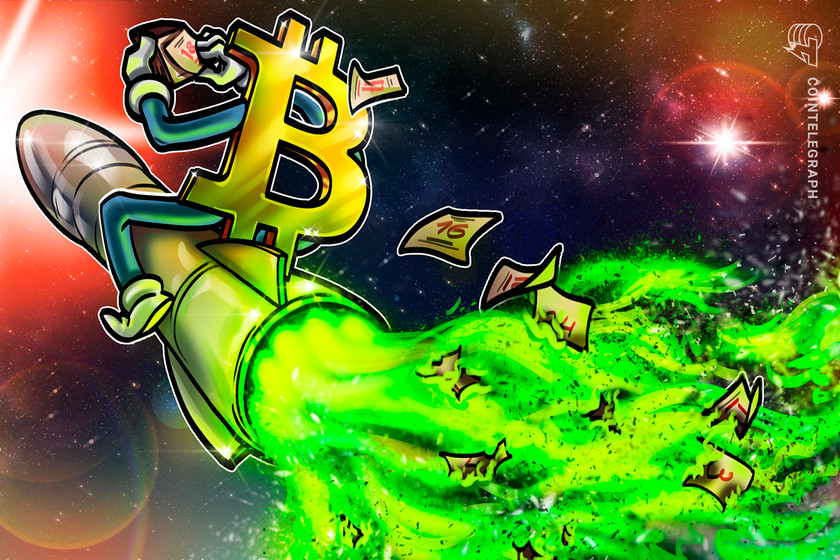Bitcoin returns to $25K as Credit Suisse bailout precedes EU rate hike move


A day of important macroeconomic news in the U.S. and Europe sees BTC price action circling the all-important $25,000 zone.
Bitcoin (BTC) rebounded for a fresh challenge of $25,000 on March 16 ahead of a key interest rate decision in Europe.


Credit Suisse stock up 40% after “decisive action”
Data from Cointelegraph Markets Pro and TradingView showed BTC/USD gaining almost $1,000 versus overnight lows of $24,229 on Bitstamp.
The pair remained buoyant as news hit that Switzerland’s central bank was due to inject $50 billion Swiss francs ($53.8 billion) into the embattled Credit Suisse, shares of which added 40% on the day.
“These measures demonstrate decisive action to strengthen Credit Suisse as we continue our strategic transformation to deliver value to our clients and other stakeholders,” CEO Ulrich Koerner stated in a press release.
While averting potential catastrophe, the move came in for criticism ahead of a day full of economic maneuvers in Europe and the United States.
“When Swiss banks need bailouts to survive it’s probably a decent time to think about buying,” trader, analyst and podcast host Scott Melker, known as “The Wolf of all Streets,” commented.
Uncertainty over European economic policy remained, with the European Central Bank (ECB) due to decide on how much interest rates should rise next.
Just like the Federal Reserve in the U.S., the ECB is caught between alleviating bank stress and keeping a lid on inflation. The day’s hike was previously due to be 50 basis points.
Twitter macro analytics account Tedtalksmacro noted that Bitcoin might already fall behind equities markets based on the previous day’s performance.
Strong moves from the 2-year yield + equities during the US cash session yesterday. Is #Bitcoin lagging TradFi again? pic.twitter.com/6xEBQansVO
— tedtalksmacro (@tedtalksmacro) March 16, 2023
In the U.S., the topic of interest was jobless claims, with analysts hoping for an overshoot of expectations to bolster the chances of the Fed pivoting on its own rate hike program.
“We are looking for a hot Jobless reports to start plotting an uptrend in Jobless claims. Getting it would increase the probability of the FED pausing rate hikes this month,” on-chain monitoring resource Material Indicators wrote in part of the Twitter commentary.
Cointelegraph contributor Michaël van de Poppe, founder and CEO of trading firm Eight, said the jobs data constituted a “big day.”
“Last week we’ve seen the largest jump since October, would be wondering whether we’ll be seeing continuation of that rise, which might mean we’ll have higher unemployment numbers,” he added.
Analysts see encouraging Bitcoin market strength
With that, traders were biding their time to gauge the impact of macroeconomic shifts, with BTC/USD still in a narrower trading range.
Related: Bitcoin to $100K next? Analyst eyes ‘textbook perfect’ BTC price move
“Same update as I was looking at yesterday guys,” popular trader Crypto Tony wrote in his latest update on the day.
“$23,400 stop loss on my existing long position, and looking for shorts if we begin to lose the $22,600 support zone Until the sort of stuck in a sideways motion.“


“BTC Grinding up while spot premium is increasing,” a cautiously optimistic Daan Crypto Trades noted while eyeing derivatives data.
“Funding rates already flipping below baseline or into the negative across the board. Looks healthy.“


Popular commentator Byzantine General meanwhile entertained the prospect of future BTC price dips being “very shallow.“
“Price keeps hugging upper range, perps basis already completely reset, futs basis still hovering around zero and there are lots of spot bids that don’t seem to be going anywhere,” he agreed.
The views, thoughts and opinions expressed here are the authors’ alone and do not necessarily reflect or represent the views and opinions of Cointelegraph.






































